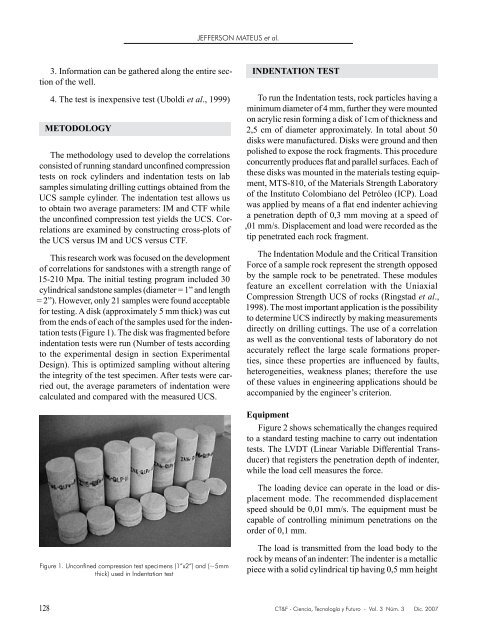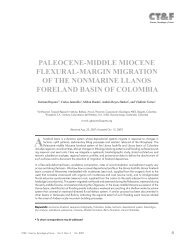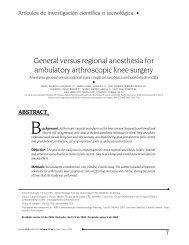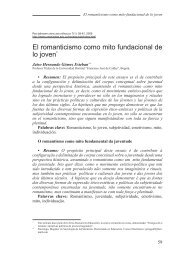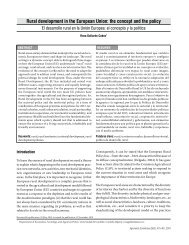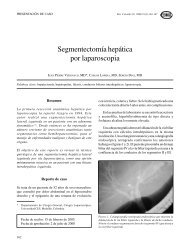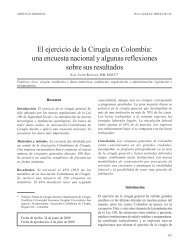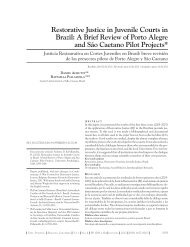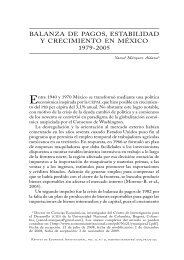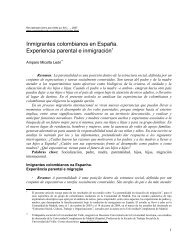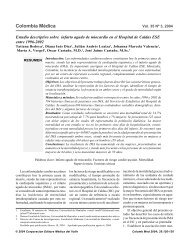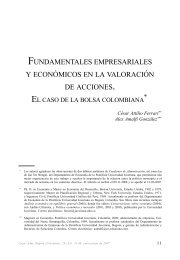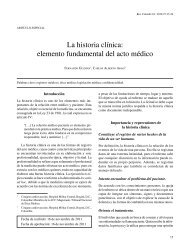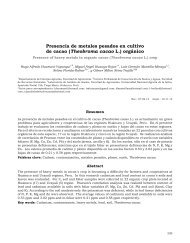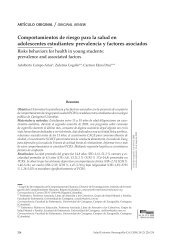correlation development between indentation parameters ... - Dialnet
correlation development between indentation parameters ... - Dialnet
correlation development between indentation parameters ... - Dialnet
Create successful ePaper yourself
Turn your PDF publications into a flip-book with our unique Google optimized e-Paper software.
JEFFERSON MATEUS et al.<br />
3. Information can be gathered along the entire section<br />
of the well.<br />
4. The test is inexpensive test (Uboldi et al., 1999)<br />
METODOLOGY<br />
The methodology used to develop the <strong>correlation</strong>s<br />
consisted of running standard unconfined compression<br />
tests on rock cylinders and <strong>indentation</strong> tests on lab<br />
samples simulating drilling cuttings obtained from the<br />
UCS sample cylinder. The <strong>indentation</strong> test allows us<br />
to obtain two average <strong>parameters</strong>: IM and CTF while<br />
the unconfined compression test yields the UCS. Correlations<br />
are examined by constructing cross-plots of<br />
the UCS versus IM and UCS versus CTF.<br />
This research work was focused on the <strong>development</strong><br />
of <strong>correlation</strong>s for sandstones with a strength range of<br />
15-210 Mpa. The initial testing program included 30<br />
cylindrical sandstone samples (diameter = 1” and length<br />
= 2”). However, only 21 samples were found acceptable<br />
for testing. A disk (approximately 5 mm thick) was cut<br />
from the ends of each of the samples used for the <strong>indentation</strong><br />
tests (Figure 1). The disk was fragmented before<br />
<strong>indentation</strong> tests were run (Number of tests according<br />
to the experimental design in section Experimental<br />
Design). This is optimized sampling without altering<br />
the integrity of the test specimen. After tests were carried<br />
out, the average <strong>parameters</strong> of <strong>indentation</strong> were<br />
calculated and compared with the measured UCS.<br />
INDENTATION TEST<br />
To run the Indentation tests, rock particles having a<br />
minimum diameter of 4 mm, further they were mounted<br />
on acrylic resin forming a disk of 1cm of thickness and<br />
2,5 cm of diameter approximately. In total about 50<br />
disks were manufactured. Disks were ground and then<br />
polished to expose the rock fragments. This procedure<br />
concurrently produces flat and parallel surfaces. Each of<br />
these disks was mounted in the materials testing equipment,<br />
MTS-810, of the Materials Strength Laboratory<br />
of the Instituto Colombiano del Petróleo (ICP). Load<br />
was applied by means of a flat end indenter achieving<br />
a penetration depth of 0,3 mm moving at a speed of<br />
,01 mm/s. Displacement and load were recorded as the<br />
tip penetrated each rock fragment.<br />
The Indentation Module and the Critical Transition<br />
Force of a sample rock represent the strength opposed<br />
by the sample rock to be penetrated. These modules<br />
feature an excellent <strong>correlation</strong> with the Uniaxial<br />
Compression Strength UCS of rocks (Ringstad et al.,<br />
1998). The most important application is the possibility<br />
to determine UCS indirectly by making measurements<br />
directly on drilling cuttings. The use of a <strong>correlation</strong><br />
as well as the conventional tests of laboratory do not<br />
accurately reflect the large scale formations properties,<br />
since these properties are influenced by faults,<br />
heterogeneities, weakness planes; therefore the use<br />
of these values in engineering applications should be<br />
accompanied by the engineer’s criterion.<br />
Equipment<br />
Figure 2 shows schematically the changes required<br />
to a standard testing machine to carry out <strong>indentation</strong><br />
tests. The LVDT (Linear Variable Differential Transducer)<br />
that registers the penetration depth of indenter,<br />
while the load cell measures the force.<br />
The loading device can operate in the load or displacement<br />
mode. The recommended displacement<br />
speed should be 0,01 mm/s. The equipment must be<br />
capable of controlling minimum penetrations on the<br />
order of 0,1 mm.<br />
Figure 1. Unconfined compression test specimens (1”x2”) and (~5mm<br />
thick) used in Indentation test<br />
The load is transmitted from the load body to the<br />
rock by means of an indenter: The indenter is a metallic<br />
piece with a solid cylindrical tip having 0,5 mm height<br />
128 CT&F - Ciencia, Tecnología y Futuro - Vol. 3 Núm. 3 Dic. 2007


